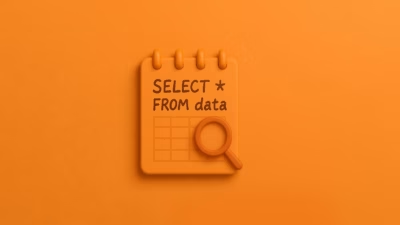You know that feeling when you finally decide to learn something new — like guitar, or baking sourdough — and you immediately Google “best way to learn blah blah”? Then suddenly, you’re drowning in a tidal wave of tutorials, courses, YouTube videos, and Twitter threads from people who somehow became experts overnight? Yeah… data science is exactly like that. Amidst all the information, you’ll encounter a myriad of myths surrounding data science that can muddy your understanding. Some will claim you need a PhD to get started, while others suggest it’s merely a matter of memorizing complex algorithms. The truth is, data science is accessible and thrives on curiosity and practice, much like any other skill.
When I first started poking around the world of data, I thought I could “just take a few Python courses” and boom — data wizard. Instead, I slammed face-first into confusion, imposter syndrome, and about a thousand Jupyter notebooks that never got finished.
Let’s save you some of that pain. Here are five classic mistakes beginners make when learning data science — and how you can sidestep them like a pro.
1. Chasing Too Many Tools at Once
Picture this: you’ve decided to build a treehouse. You grab a hammer… then a drill… then a saw… then a chainsaw… then a crane. You end up with a yard full of expensive toys and no treehouse.
That’s what happens when beginners try to learn Python, R, SQL, Power BI, TensorFlow, PyTorch, AWS, and Spark all at once. (Yes, I’m looking at you, 12-tab-open learner.)
I totally get the temptation. Every job post screams a different tech stack. Every blog makes you think, “Wait, I also need to learn Dask?!” Pretty soon, you’re overwhelmed and weirdly good at installing libraries but terrible at actually solving problems.
Here’s the smarter play: Pick one primary language — usually Python or R — and one data handling tool — usually SQL — and stick with them. Get stupidly good at those before adding anything else.
👉 Quick Tip:
Learn Python + SQL first. Treat everything else like bonus toppings, not the pizza.
2. Memorizing Instead of Doing
Ah, the good old “watch 20 hours of video tutorials, absorb nothing” trap.
I used to binge-watch entire courses on Udemy thinking I was learning. It felt productive. My notes looked amazing. My brain, however? Empty as a politician’s promise.
Here’s the hard truth: data science is a contact sport. You can’t read your way into it. You have to do it — badly at first — and that’s where the magic happens.
It’s messy. Your first models will suck. Your first visualizations will look like they were made in Microsoft Paint. Good. That’s the price of admission.
The real skill isn’t memorizing syntax; it’s wrestling with messy datasets, debugging stupid errors, and asking, “Wait, why did my accuracy drop by 20%?” and hunting down the answer like a detective on too much caffeine.
👉 Quick Tip:
For every hour you spend watching or reading, spend two hours building something — anything. Kaggle competitions, small personal projects, whatever. Just get your hands dirty.
3. Ignoring Fundamentals in the Rush to “AI”
Everyone wants to build the next ChatGPT or Stable Diffusion. It’s sexy, right? (Admit it, you’ve Googled “How to build AI” at least once.)
But here’s the unsexy reality: Machine learning is 90% boring data work and 10% fancy algorithms.
If you don’t understand statistics — like distributions, p-values, bias-variance tradeoff — you’re basically flying a plane without knowing how to read the dashboard. And don’t even get me started on linear algebra. (That stuff isn’t just optional; it’s baked into the soul of ML.)
When I finally slowed down and spent a month deep-diving into statistics and probability, it was like someone handed me a flashlight in a pitch-dark cave. Suddenly, all those machine learning models made sense instead of feeling like magic tricks.
👉 Quick Tip:
Before diving deep into machine learning, spend serious time on:
- Statistics (mean, median, variance, hypothesis testing)
- Probability (Bayes’ theorem will haunt your dreams, but it’s worth it)
- Linear Algebra basics (vectors, matrices, dot products)
No shortcuts. No skipping the boring chapters. Your future self will want to hug you.
4. Underestimating Communication Skills
Nobody talks about this enough: It’s not enough to be good at data science — you have to be good at talking about data science.
Your model might have 99.9% accuracy, but if you can’t explain what you did to your boss (who may still think “Python” is a snake), it doesn’t matter.
Early in my career, I built a machine learning model that predicted customer churn with insane precision. I was pumped. I presented it to leadership using words like “log loss” and “regularization strength.” Their eyes glazed over faster than Krispy Kreme donuts. Project dead.
Here’s the thing: data science isn’t just about analysis. It’s about storytelling. Why does this insight matter? What should we do about it? How does it connect to the bigger picture?
👉 Quick Tip:
Practice summarizing your work like you’re explaining it to your smart-but-busy friend. No jargon. No 20-slide decks. Just the point, the impact, and the “so what?”
5. Comparing Your Journey to Everyone Else’s
There’s nothing more soul-crushing than scrolling through LinkedIn and seeing that 22-year-old who just got hired at Google because they built a face recognition system in their freshman year.
You start spiraling: “Am I too late? Am I not smart enough? Should I just open a bakery instead?”
Listen — the data science world is full of noise. Some people come from CS backgrounds. Some were accountants. Some were stay-at-home parents who learned to code during nap times. The paths are messy and wonderful and not one-size-fits-all.
It took me almost two years of relentless learning, failing, and starting over to land my first proper data role. And guess what? That so-called “slow” journey made me 10x better at my job once I got there.
Comparison is the fastest way to lose your joy and energy. Don’t do it. Trust your process. Your only real competition is yesterday’s version of you.
👉 Quick Tip:
Set personal milestones — not Instagrammable ones. Celebrate every tiny win. Finished a project? Awesome. Understood cross-validation? Huge. Just keep showing up.
Wrapping Up: Data Science Is a Marathon (and That’s a Good Thing)
If there’s one thing I want to leave you with, it’s this: data science rewards the stubborn.
Not the fastest.
Not the smartest.
Not the most “naturally gifted.”
The ones who just keep showing up. Keep tinkering. Keep getting a little better, day after day.
You’re gonna make mistakes. Good. That means you’re in the arena, not sitting in the stands.
So breathe. Focus on one tool at a time. Build messy projects. Learn the boring fundamentals. Tell better stories with your data. And above all — run your own race.
The rest will take care of itself.
P.S. If you ever find yourself drowning in too many tabs again, just remember: 99% of the magic happens when you close the tutorials and open a blank notebook.
Now — what’s your next messy little project gonna be? 🚀





